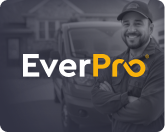6 HVAC Marketing Strategies to Drive More Leads in 2022
In this article, we’ll explain what an HVAC contractor marketing strategy is. We’ll also share why it’s important for generating leads. Plus, we’ll explore 6 ways to get started right now.

Content Director
The days when HVAC pros could rely exclusively on the Yellow Pages to generate leads are long gone. If you want to reach more potential customers in 2022, you need to take your marketing online.
But digital marketing is no cakewalk. There are a lot of moving parts. And while there are plenty of free options, you’ll get the strongest results if you choose to allocate some of your marketing budget to digital efforts.
Said another way, it’s important to develop a solid HVAC advertising plan before you just dive in.
In this article, we’ll explain what a marketing strategy is. We’ll also share why it’s important for generating leads for your HVAC business. Plus, we’ll explore 6 HVAC marketing ideas to get you started right away.
What Is a Marketing Strategy?
A marketing strategy is your overall plan for making contact with potential customers and turning them into buyers. Similarly, a digital marketing strategy is a marketing strategy that’s focused on web-based advertising and promotion.
The ultimate goal of a marketing strategy is to sell. But there are some important secondary things it can also accomplish.
For example, a solid marketing plan will also:
- Establish brand recognition
- Contribute to your online presence
- Differentiate you from your competition
- Reinforce the positive experiences past customers have had
Your strategy provides a framework for all your marketing efforts. You can use it to direct time, effort, and resources. The ultimate goal is to get the best return on investment for every marketing dollar you spend.
The 4 Ps of Marketing
Ideally, a solid marketing strategy will revolve around the following core elements, sometimes called the 4 Ps of marketing:
- Product – What are you selling? (HVAC units, parts, installation, repair, maintenance, etc.)
- Price – How much does the customer pay? (This is often framed with a focus on the value they get from your products and services.)
- Place – Where are you selling? (In other words, what’s your service area?)
- Promotion – How are you reaching customers and convincing them to buy? (What venues are you using for marketing?)
Analysts have found that marketers are 674% more likely to see success when they’re well organized. One critical element of organization is a marketing strategy.
The four things listed above will help you organize your marketing and stay focused.
Lead Generation
Lead generation is the process of getting the attention and interest of potential customers and then cultivating that interest.
Lead generation (or “lead gen”) takes many different forms and can happen through a variety of marketing channels. You might use social media, website content, paid advertising, or even in-person interactions.
It doesn’t really matter how you generate leads. But it does matter that you generate them.
Even if you’re not trying to grow your business, you’ll still need a healthy flow of new customers to maintain positive cash flow. You’ll never not need lead gen.
How is lead generation related to your marketing strategy? The two ideas are two sides of the same coin.
One of the key goals of your marketing strategy should be to generate leads.
6 Strategic Ways to Generate HVAC Leads
A solid HVAC marketing strategy will set you up for powerful lead generation. That, in turn, sets you up to close more deals and hit your ROI goals.
Here are our top 6 tactics for jump-starting your marketing plan to help grow your HVAC business.
1. Build a High-Ranking HVAC Website
If you’re going to market your HVAC business online, you’re going to need a website. We recommend building a well-branded website if you don’t already have one.
While some smaller HVAC companies choose to simply use social media, like Facebook, in place of a site, we don’t recommend this approach. You won’t have control over your site or your data if someone else hosts it.
Naturally, you may not know how to build a website. If that’s the case, you can always partner up with a digital marketing agency or a professional freelancer to help you out.
Whether you build your site yourself, hire someone to do it for you, or choose to update your existing site, you’ll want to keep the following things in mind.
Optimization
You need to optimize your site for your target market, as well as Google’s organic local search.
This kind of optimization is typically referred to as SEO (or Search Engine Optimization). SEO is an admittedly complex field. It involves a lot. But the overall goal is simple. SEO is all about helping your site rank higher in search results.
Why is this so important? Because your website is the foundation of your business’s online presence. It should represent your brand and what it sells.
That includes everything from complete descriptions of products and services to your company’s tone and personality. An HVAC website can range from a simple one-page site with minimum information to a large, multi-page site.
You want your site to convey everything potential customers need to know about your business and what you offer. Focus your website content on proactively providing answers to the questions you hear most often.
Mobile-Friendly Design
Folks are at least as likely to find your website on their phones as they are on their computers. In fact, mobile users account for just over half of global web traffic.
It’s more likely for potential customers to interact with your website on a smartphone than on a device with a larger screen.
Plus, Google tends to favor mobile-friendly sites.
With that in mind, make sure your site runs seamlessly on both mobile and desktop browsers. If you’re not sure how to do that, check out Google’s guide on optimizing sites for mobile users.
Localized Content and Contact Information
Content can make or break a site. That’s why it’s so important to make sure everything you put on your site is valuable to visitors.
Focus on information that informs readers.
That includes things like basic contact information, hours of operation, and services offered. But it could also include helpful information, like tips on between-maintenance care of their HVAC system or energy efficiency tricks.
Social Proof
The idea of social proof is as much about psychology as it is about marketing. When we aren’t sure what to do, we tend to imitate others. That can include things like shopping where others shop or buying what others buy.
Social proof in marketing typically focuses on feedback from other customers—things like online reviews—and how that information influences other potential buyers.
Social proof could include things like:
- Testimonials
- Reviews
- Case Studies
- Even word-of-mouth feedback
Social proof is a powerful marketing concept. We put a lot of stock in what others find helpful. That’s why it’s a really good idea to include social proof (like testimonials from satisfied customers) on your site.
CTAs
Finally, don’t forget to include strategic CTAs throughout the site.
CTAs (or Calls to Action) are concise messages that gently nudge site visitors to do something. CTAs can focus on making contact with you, sharing their contact details, scheduling consultation, or getting service quotes.
CTAs (like buttons and forms on your site) are what turn visitors into leads.
2. Claim Your Google Business Profile
Your Google Business Profile is a free feature that can help you manage your local business’s online presence.
Once you’ve claimed and updated your Google Business Profile, your business is more likely to appear in the “Local Pack” on Google’s SERPs (Search Engines Results Page). You’ll also get a pin on Google Maps that shows your location.
The Local Pack is important because that’s where Google features businesses that offer products and services users are actively shopping for. If you’re consistently in the Local Pack, you’re getting solid exposure to folks who are ready to buy.
Each result in the Local Pack showcases the business’s basic information. The listing includes the business’s name, address, phone number, description, website link, photos, working hours, reviews, and directions.
To claim your Google Business Profile and ensure all the relevant information is listed there, click here. Be sure to upload some high-quality images of your business while you’re at it.

3. Get on Social Media
Social media is a powerhouse for lead generation. 57.6% of the world’s population is regularly active on social media. In fact, the average person spends about two and a half hours on social media every day.
It’s no surprise that social media marketing is one of the go-to lead strategies for marketers.
Marketing on social media can be a great way to promote your HVAC business. Social media gives you the ability to narrow down your target audience. That means your content is seen by the right people—people who are likely to buy from you.
Social media is also a powerful platform for recruiting new team members. Linking out to a job description for an HVAC service technician can be effective, especially when you leverage local targeting to show your ad to the right audience.
But as powerful as social media marketing is, it can be pricy. We recommend that you start by determining your budget for social media marketing efforts. You want to ensure you don’t overspend.
And if you don’t have the funds to pay for social media promotion, that’s okay. You can still engage with potential HVAC customers through regular posts.
Social Media Just for Home Services
In addition to the mainstream social platforms, you should also consider signing up for Nextdoor.
Nextdoor is a social platform where homeowners and communities within a specific area can connect and share recommendations. You probably have potential customers who are already on Nextdoor.
Not only that but signing up is free.
Once on Nextdoor, you can engage local homeowners using organic posts (free posts) that show up in the neighborhood’s newsfeed.
4. Consider Paid Advertising on Google
Generating leads from organic Google searches is a legitimate strategy. But it can be a bit slow.
It can literally take months for organic search marketing to gain any real traction. We’re not knocking it, though. If you have a limited advertising budget, it’s worth the effort. Just know it’ll take some time.
On the other hand, you can accelerate your HVAC marketing plan with paid advertising.
Google has several advertising options. It’s best to start with paid search ads and Local Service Ads for HVAC leads.
Paid Search
A paid search ad or Google Ad is a sponsored result that appears above organic results.
These ads are ideal for boosting online visibility and traffic to your site. Google lets you target a specific area (or market) by homing in on specific keywords—just like in organic search.
It is, however, important to understand the cost that goes into paid ads. You only pay when someone clicks your ad. That’s the good news. But the cost can vary a great deal, depending on the target keywords. So, some keywords are potentially expensive.
The average click-through rate for search ads is 6.18%. That means that for every 100 people who see your ad, about six of them will click on it.
Local Service Ads
Local Service Ads connect your business with people in your area who are actively looking for the services you offer. While they’re similar to Google Ads, there are three distinct differences:
- Local Service Ads are pay-per-lead ads. With Google Ads, you pay for each click. With Local Service Ads, you only pay when a potential customer actually reaches out to you.
- Local Service Ads are sometimes cheaper than Google Ads. If you’re looking to get into paid advertising but you have a limited budget, that’s very good news.
- Local Service Ads are at the very top of search engine results. They even appear above Google Ads.
Local Service Ads can be a powerful way to drive leads.

5. Invite Positive Online Reviews
Online customer reviews make a big difference. They’re one of the most powerful forms of social proof, which we covered above.
That’s because they help establish customer trust.
Online reviews are a digital form of word-of-mouth marketing. Here are some of the ways customer reviews have proven their value to an overall marketing strategy.
- 90% of potential customers will look over online reviews before they even visit a local business.
- 72% of potential customers are more inclined to trust local businesses with positive reviews.
- 88% of potential customers say online reviews influence them as much as personal recommendations from family and friends.
- 72% of potential customers won’t proactively engage with a local business until after they’ve read positive reviews.
If you were to follow no other tips in this article, you could generate leads using just two of our tips.
- Claim your Google Business Profile
- And invite positive online reviews
Those two things alone would go a long way toward lead generation. But it’s easy to claim your Google Business Profile. Inviting positive online reviews is a bit trickier.
The best strategy for getting online reviews? Ask for them. When you complete a job, simply ask the customer for a Google review.
Don’t specifically ask for a 5-star review. That feels manipulative. Instead, invite candid feedback. If your customer service is good and the work was completed, more often than not, you’ll get a good review.
Once you receive reviews, it’s important to respond to all of them. That includes the negative reviews.
When customers leave negative reviews, don’t argue with them. Instead, start with a non-defensive apology. Offer to provide a solution for their complaint, if possible. Then thank them for their feedback.
This kind of response to negative reviews can turn a bad thing into a good thing. Other customers will see how you handle complaints. A gracious attitude will win others over!
6. Make Use of Your Email List
80% of marketers say email is one of their top three strategies for reaching new customers.
Not only is email effective in marketing, but it’s also cost-effective. The average ROI (or Return on Investment) is about $42 for every dollar spent. That’s not bad at all.
When it comes to lead generation, email marketing is an effective way to target your potential customers directly with information that interests them. Just make sure every email you send is truly valuable to your potential customers. Endless sales pitches tend to push people away.
Of course, before you start using email, you need the email addresses of potential customers. How do you get those?
How to Build Your Email List
While you can simply buy email lists, we don’t recommend that approach. Inexpensive email lists rarely do much to generate leads. And solid email lists tend to be pricy.
Instead, we recommend building your email list yourself.
Building your email list starts with getting potential customers to your website. You can do this by focusing on SEO, as discussed above.
You could also use social media to drive traffic to your site. Or paid ads. Even online reviews have the potential to draw in visitors to your site.
Every tactic in this article can be used in combination with other tactics. In fact, they build on each other. The best marketing strategies use complementary tactics to reach even more potential customers.
Once folks are on your site, there are a couple of ways to ask for an email address. With each, remember to focus on what’s valuable to your potential customer.
You want their email address. But what do they want?
1. Include an email sign-up form on your website.
Make it easy for visitors to your website to sign up for your email list by including an email sign-up form prominently on your site. While this is a straightforward approach, it can be very effective.
Just be sure to offer something in exchange for their contact information. That might be something like a piece of content or access to a monthly newsletter.
If you have the budget to afford it, you could even offer a promo code for a modest discount.
2. Use pop-ups on your website. (But use them sparingly.)
Pop-ups can also be effective in getting people to sign up for your email list. If—and this is critical—you don’t bug people with pop-ups.
Make sure any pop-ups are nonintrusive. Make them easy to close. And set them up to display when users have reached the bottom of a page rather than triggering right at the top.
HVAC Marketing Ideas You Can Use Right Now
A solid HVAC marketing strategy can help you keep the customers you have and win over new ones.
Sure, it’s a lot to take in. But we encourage you to take the time to understand each aspect of developing your strategy we’ve covered here. Then you can use these tips to generate leads for your business.
And, of course, be sure to track your progress with each tactic. It’s important to monitor your results. That way, you’ll know what’s working and be able to adjust what isn’t.
Building out a full HVAC marketing strategy will take some time. However, there are some things you can do right now—today—to get started.
- Claim and update your Google My Business profile. Make sure it’s complete with all your contact information for maximum lead-generating potential. Since this will only take a few minutes, why not tackle it right now? Here’s the link.
- Set up a social media account if you don’t already have one. If you do, take a few minutes to add some content. Post one thing right now … but also plan a few more posts and schedule them to go live in the next couple of days.
- Tell your field techs to ask for customer reviews. The best time to get a positive review is right when the customer is relieved to have their HVAC system working again. That’s when techs should ask. And remind them to smile.
- Respond to any reviews you’ve already received. Even if it’s been a few months, take the time to say thank you for positive reviews. And if you run across negative reviews, offer to fix the situation, if possible.
Ashley’s professional experience includes content creation of all kinds, from articles and infographics to websites and whitepapers. When she’s not working, she enjoys dark coffee, dad jokes, and fiction—mostly horror and urban fantasy.

Business Solutions For Field Service Pros
EverPro offers specialized solutions designed for home and field service professionals. We’ve got the business tools to help you get the job done.



